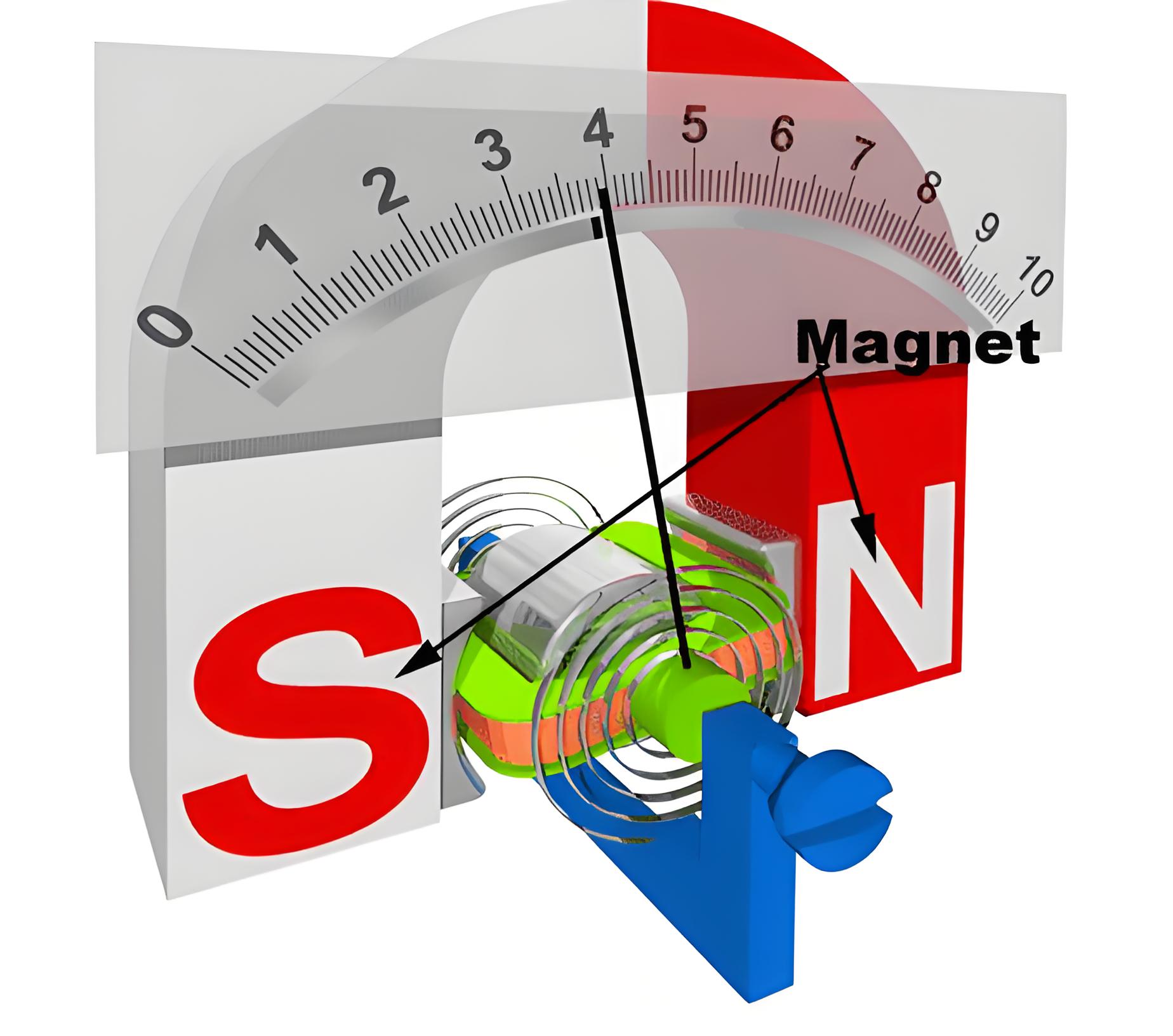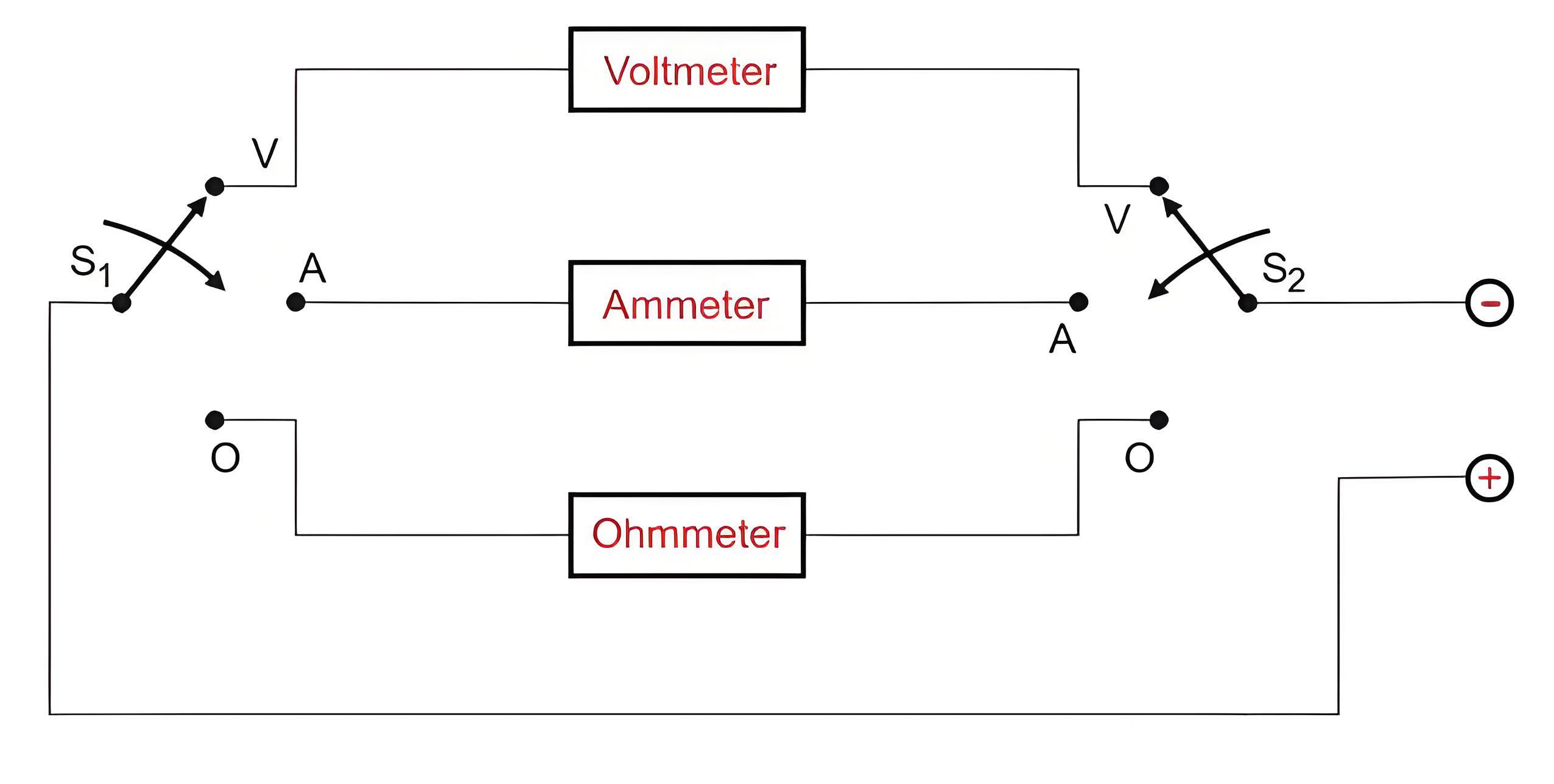What is Analog Multimeters?
What is Analog Multimeters?
Analog Multimeter Definition
An analog multimeter is a device used to measure electrical quantities like voltage, current, and resistance using a needle and scale.
Working Principle
It works on the d’Arsonval galvanometer principle. A needle indicates the measured value on a scale. When current passes through a coil in a magnetic field, it creates a deflecting torque that moves the needle over a graduated scale.
A pair of hairsprings is attached to the moving spindle to provide the controlling torque. In a multimeter, the galvanometer is a left- zero-type instrument, i.e. needle rests to the extreme left of the scale from where the scale begins with zero.

The meter functions as an ammeter with low series resistance for direct current. To measure high current, a shunt resistor is connected across the galvanometer, preventing excess current through the galvanometer. This allows the multimeter to measure milli-amperes to amperes by bypassing most current through the shunt.
For DC voltage measurement, the primary instrument becomes a DC voltage measuring apparatus or DC voltmeter.
By adding a multiplier resistance, an analog multimeter can measure the voltage from milli-volts to kilovolts, and this meter works as a millivoltmeter, a voltmeter or even as a kilo voltmeter.
With a battery and a resistance network, the multimeter functions as an ohmmeter. The range can be changed by connecting a switch to different shunt resistances, allowing for various resistance measurement scales.
Analog Multimeter Diagram
The diagram shows switches to select measurement types and ranges, plus a rectifier for AC measurements.

Here we are using two switches namely S1 and S2 to select the desired meter. We may use additional range-selector switches to choose particular range required in reading amperes, volts, and ohms. We use a rectifier to measure an AC voltage or current with the multimeter
Advantages
A sudden change in signal can detect by analog multimeter more swiftly than a digital multimeter.
All measurements are possible by using one meter only.
An increase or decrease in signal levels can be observed.
Disadvantages
Analog meters are ulky in size.
They are bulky and costly.
The pointer movement is slow
Inaccurate due to the effect of earth magnetic field.
They are vulnerable to shock and vibration.
The Electricity Encyclopedia is dedicated to accelerating the dissemination and application of electricity knowledge and adding impetus to the development and innovation of the electricity industry.













